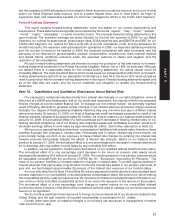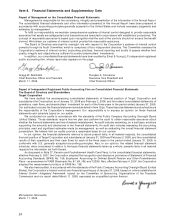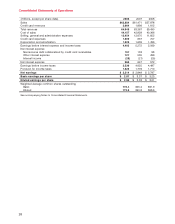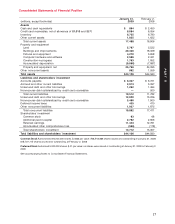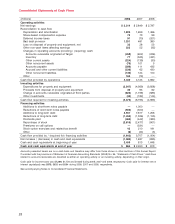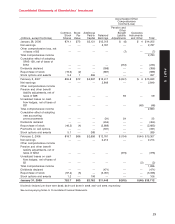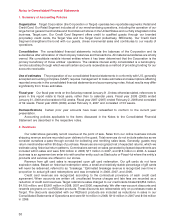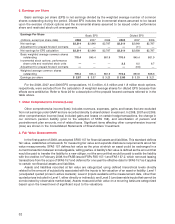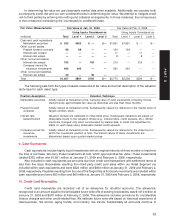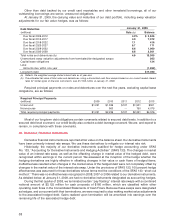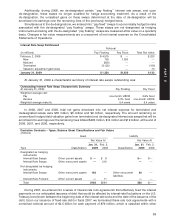Target 2008 Annual Report Download - page 53
Download and view the complete annual report
Please find page 53 of the 2008 Target annual report below. You can navigate through the pages in the report by either clicking on the pages listed below, or by using the keyword search tool below to find specific information within the annual report.
In determining fair value we use observable market data when available. Additionally, we consider both
counterparty credit risk and our own creditworthiness in determining fair value. We attempt to mitigate credit
risk to third parties by entering into netting and collateral arrangements. In those instances, the net exposure
is then measured considering the counterparty’s creditworthiness.
Fair Value Measurements Fair Value at Jan. 31, 2009 Fair Value at Feb. 2, 2008
Using Inputs Considered as Using Inputs Considered as
(millions) Total Level 1 Level 2 Level 3 Total Level 1 Level 2 Level 3
Cash and cash equivalents
Marketable securities $ 302 $302 $ — $— $1,851 $1,851 $ — $—
Other current assets
Prepaid forward contracts 69 69 — — 124 124 — —
Interest rate forward ————11 — 11 —
Interest rate swaps ————8— 8—
Other noncurrent assets
Interest rate swaps 163 — 163 — 215 — 215 —
Company-owned life
insurance investments 493 493 — — 561 561 — —
Other noncurrent liabilities
Interest rate swaps 30 — 30 — ————
Total $1,057 $864 $193 $— $2,770 $2,536 $234 $—
The following sets forth the types of assets measured at fair value and a brief description of the valuation
technique for each asset type:
Position description Valuation Technique
Marketable securities Initially valued at transaction price. Carrying value of cash equivalents (including money
market funds) approximates fair value as maturities are less than three months.
Prepaid forward Initially valued at transaction price. Subsequently valued by reference to the market price of
contracts Target common stock.
Interest rate Valuation models are calibrated to initial trade price. Subsequent valuations are based on
swaps/forward observable inputs to the valuation model (e.g., interest rates, credit spreads, etc.). Model
inputs are changed only when corroborated by market data. A credit risk adjustment is
made on each swap using observable market credit spreads.
Company-owned life Initially valued at transaction price. Subsequently valued by reference to the index fund in
insurance which the investment position is held. The market values of these investments are
investments determined based upon quoted market prices.
Cash equivalents include highly liquid investments with an original maturity of three months or less from
the time of purchase. We carry these investments at cost, which approximates fair value. These investments
totaled $302 million and $1,851 million at January 31, 2009 and February 2, 2008, respectively.
Also included in cash equivalents are amounts due from credit card transactions with settlement terms of
less than five days. Receivables resulting from third-party credit card sales within our Retail Segment are
included within cash equivalents and were $323 million and $400 million at January 31, 2009 and February 2,
2008, respectively. Payables resulting from the use of the Target Visa at third-party merchants are included within
cash equivalents and were $53 million and $60 million at January 31, 2009 and February 2, 2008, respectively.
Credit card receivables are recorded net of an allowance for doubtful accounts. The allowance,
recognized in an amount equal to the anticipated future write-offs of existing receivables, was $1,010 million at
January 31, 2009 and $570 million at February 2, 2008. This allowance includes provisions for uncollectible
finance charges and other credit-related fees. We estimate future write-offs based on historical experience of
delinquencies, risk scores, aging trends, and industry risk trends. Substantially all accounts continue to
33
PART II
9. Cash Equivalents
10. Credit Card Receivables


